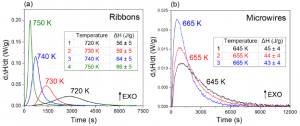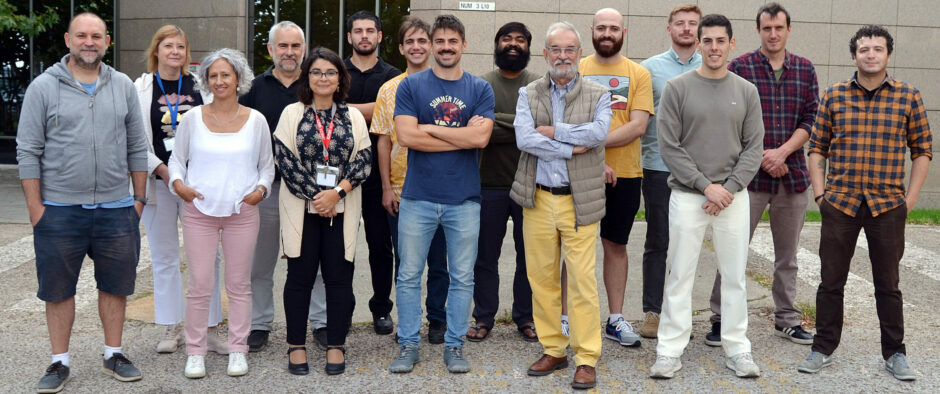“Controlling devitrification in the FeSiB system without alloying additions”
X. Zhang, R. Perez del Real, M. Vazquez, W. Liang, J. Mesa, A. Jimenez and L.H. Lewis
Journal of Non-Crystalline Solids 576 (2022) 121277
DOI: doi.org/10.1016/j.jnoncrysol.2021.121277
Efficient electric machines require soft magnetic materials with superior properties. Here, significant differences in the primary devitrification process and the resulting microstructure of amorphous metallic Fe79Si11B10 alloys synthesized by two rapid solidification methods are confirmed: melt-spun ribbons and water-quenched microwires, investigated with calorimetric, structural, and magnetic probes. The primary devitrification process of ribbons occurs at higher temperature (by 80 K) with a faster exothermic heat release than that of quenched microwires, despite their common chemical composition and fully devitrified structural state. Primary devitrification reveals that ribbons exhibit a ~70% higher effective activation energy and ~110% larger value of Avrami exponent, indicating different devitrification routes taken by these two types of material. Ribbons crystallize via a continuous nucleation process partly relying on pre-existing surface nuclei, with an interface-controlled growth mechanism. In contrast, the quenched microwires devitrify solely from pre-existing nuclei, with diffusion-controlled growth. Differences are attributed to unique quenched-in structures created by the specific rapid solidification conditions. These results suggest approaches to control the microstructure in FeSiB compositions without the need for non-magnetic alloying additions.

This research has been funded in part by Northeastern University (Boston, USA), Fulbright España, the IEEE Magnetics Society Educational Seed Funding, and the Regional Government of Madrid under project S2018/NMT-4321 NanomagCOST-CM
